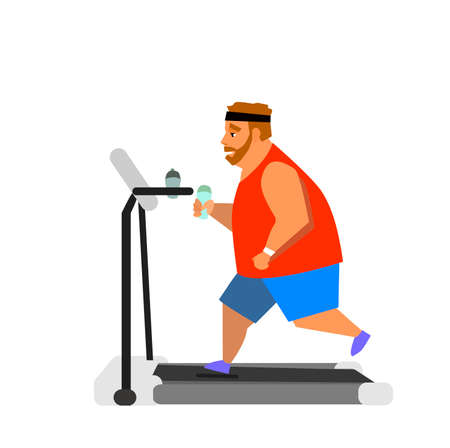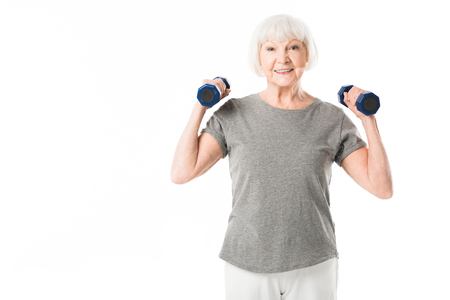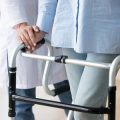Understanding Pain After Joint Replacement Surgery
After hip, knee, or shoulder replacement surgery, it’s completely normal for older adults to experience pain. This discomfort is part of the healing process as your body adjusts to the new joint. Knowing what types of pain are expected and which signs might mean something more serious can help you recover with confidence.
What Kind of Pain Is Normal?
Most people will feel some pain, stiffness, and swelling around the joint in the days and weeks after surgery. The amount and type of pain can depend on the specific joint replaced, your overall health, and how active you are during recovery. Here’s a general idea of what you might experience:
| Joint Replaced | Common Pain Experience |
|---|---|
| Hip | Aching or soreness around the thigh, groin, or buttock; usually improves over several weeks |
| Knee | Soreness, tightness, and swelling at the front or sides of the knee; may be sensitive to movement or touch |
| Shoulder | Dull aching pain in the upper arm or shoulder blade area; increased discomfort when raising the arm |
How Long Does the Pain Last?
Pain is usually most intense during the first few days after surgery but should slowly improve each week. Many older adults feel much better within 4–6 weeks, though mild aches can last longer as you regain strength and flexibility. Following your physical therapists advice will help speed up this process.
When Should You Be Concerned?
While some pain is expected, certain symptoms could mean there’s a problem that needs medical attention. Watch out for these warning signs:
- Pain that gets worse instead of better after a few days
- Redness, warmth, or pus around the incision site
- Fever above 101°F (38.3°C)
- Numbness or tingling in your leg or arm that doesn’t go away
- Trouble moving your new joint at all
- Sudden sharp or severe pain not helped by medication
Quick Tips for Managing Normal Pain
- Use ice packs as recommended to reduce swelling and numb sore areas
- Take prescribed medications on schedule—even if you feel okay
- Try gentle movements and stretches taught by your rehab team to keep from getting stiff
- Rest often but avoid sitting still for too long during the day
- If pain makes it hard to sleep, let your doctor know right away
2. Medications and Safe Pain Management
Understanding Your Pain Medication Options
After a hip, knee, or shoulder replacement, managing pain is important for comfort and recovery. In the U.S., doctors often use a combination of prescription medications and over-the-counter (OTC) options to help seniors manage pain safely. Here’s what you need to know:
Common Pain Medications Prescribed After Joint Replacement
| Type of Medication | Examples | How They Help | Common Side Effects |
|---|---|---|---|
| Opioids (Prescription) | Oxycodone, Hydrocodone, Morphine | Strong pain relief for short-term use after surgery | Drowsiness, constipation, nausea, risk of addiction |
| Non-Opioid Prescription Medications | Tramadol, Celecoxib | Milder pain relief with fewer risks than opioids | Dizziness, stomach upset, headache |
| Over-the-Counter (OTC) | Acetaminophen (Tylenol), Ibuprofen (Advil) | Mild to moderate pain relief; can be used with some prescriptions | Liver damage (acetaminophen), stomach upset or bleeding (ibuprofen) |
Safety Concerns With Opioids in Seniors
Opioids can be very effective but carry risks, especially for older adults. U.S. guidelines recommend using the lowest dose for the shortest time possible to avoid problems like addiction or falls. Always follow your doctor’s instructions closely and never share your medications with others.
- Avoid driving or operating machinery while taking opioids.
- Watch out for confusion or dizziness, which can increase fall risk.
- Store medications securely to prevent misuse by others.
- If you have breathing problems or sleep apnea, let your doctor know before using opioids.
Strategies for Effective Medication Management at Home
Seniors in the U.S. can benefit from creating a simple system to manage their medications and reduce mistakes:
- Create a medication schedule: Use a pill organizer or set alarms as reminders.
- Keep an updated list: Write down all your medications and dosages; bring this list to each medical appointment.
- Avoid mixing medications without checking: Some drugs interact badly; ask your pharmacist if unsure.
- Taper off opioids as directed: Do not stop suddenly—always follow your doctor’s plan to prevent withdrawal symptoms.
- Ask about non-drug options: Physical therapy, ice/heat packs, and gentle movement can also help control pain.
If You Have Questions About Your Medications…
Your healthcare team is there to help. Call your doctor or pharmacist if you are unsure about how or when to take any of your medicines. Most U.S. pharmacies offer medication counseling—don’t hesitate to ask!

3. Non-Pharmacological Pain Relief Techniques
Best Practices for Managing Pain Without Medication
Pain after a hip, knee, or shoulder replacement is common, especially among older adults. While medication can help, there are many non-drug methods that can also make a big difference in comfort and healing. Let’s look at some of the best practices you can use at home.
Physical Therapy: Your Path to Recovery
Physical therapy is a key part of recovery after joint replacement surgery. Working with a licensed physical therapist helps you regain strength, improve movement, and reduce pain. Most therapy plans include:
- Gentle stretching: Helps maintain flexibility around the new joint.
- Strength exercises: Builds up muscles that support the joint.
- Walking or movement training: Teaches safe ways to move and avoid falls.
Common Physical Therapy Activities After Surgery
| Activity | Main Benefit |
|---|---|
| Ankle pumps | Improves blood flow, reduces swelling |
| Quad sets | Strengthens thigh muscles |
| Heel slides | Increases knee or hip flexibility |
| Pendulum swings (shoulder) | Aids gentle shoulder mobility |
Ice and Heat Therapy: Simple Tools for Comfort
Applying ice packs and heating pads are tried-and-true ways to manage pain and swelling at home. Here’s how to use them safely:
- Ice packs: Best for reducing swelling and numbing sharp pain right after surgery. Use for 15-20 minutes at a time, several times a day. Always wrap ice in a towel—never place directly on skin.
- Heat packs: Helpful for relaxing stiff muscles a few days after surgery, once major swelling has gone down. Use moist heat (like a warm towel) for 15-20 minutes. Avoid if your incision is still swollen or red.
Relaxation Exercises: Calm the Body and Mind
Anxiety and stress can make pain feel worse. Relaxation techniques such as deep breathing or guided imagery are easy to learn and use anywhere. Try this simple exercise:
- Sit comfortably with both feet on the floor.
- Breathe in slowly through your nose for four counts.
- Breathe out gently through your mouth for four counts.
- Repeat for one to two minutes whenever you feel tense or uncomfortable.
Safe Home Modifications: Set Up for Success
Your home environment plays an important role in staying comfortable and avoiding injury after surgery. A few simple changes can make daily life easier:
| Modification | How It Helps |
|---|---|
| Add grab bars in the bathroom | Makes getting up safer and easier |
| Remove loose rugs/clutter | Lowers risk of tripping or falling |
| Use a shower chair or raised toilet seat | Adds comfort and safety during bathing/toileting |
| Keep essentials within reach | Avoids unnecessary bending or reaching |
The Takeaway: Small Steps Matter
You don’t have to rely only on medication to handle pain after joint replacement. With physical therapy, careful use of ice/heat, relaxation exercises, and smart home modifications, you can reduce discomfort and promote healing safely at home.
4. Encouraging Mobility and Preventing Complications
The Importance of Gentle Movement After Surgery
After a hip, knee, or shoulder replacement, moving your body may feel scary at first—but gentle movement is key to a smooth recovery. Staying active helps reduce stiffness, eases pain, and speeds up healing. It also lowers the risk of complications like blood clots and pneumonia, which can happen if you stay in bed too long.
Safe Exercises for the Elderly
Your doctor or physical therapist will give you specific exercises that are safe for you. These movements are designed to help you regain strength and flexibility without putting too much stress on your new joint. Here are some common recommendations:
| Body Part | Recommended Gentle Exercises |
|---|---|
| Hip | Ankle pumps, heel slides, walking with support |
| Knee | Quad sets, straight leg raises, seated knee bends |
| Shoulder | Pendulum swings, assisted arm lifts, gentle stretching |
Tips for Safe Exercise:
- Start slow and increase activity as directed by your care team.
- If you feel sharp pain or dizziness, stop right away and call your doctor.
- Use assistive devices (like walkers or canes) if recommended.
- Always wear non-slip shoes to prevent falls.
Preventing Blood Clots (Deep Vein Thrombosis)
One serious risk after joint replacement surgery is blood clots forming in the legs. Moving your legs regularly and doing ankle pumps can help keep your blood flowing. Your doctor may also prescribe medications or special stockings to further lower your risk.
Signs of a Blood Clot to Watch For:
- Swelling in the calf or thigh that does not go down with elevation
- Pain or tenderness in one leg, especially when standing or walking
- Redness or warmth over the area
- If you notice these signs, call your healthcare provider right away.
Getting Support Through Community Resources and Medicare-Covered Physical Therapy
You don’t have to recover alone. Many local senior centers offer exercise classes tailored for those recovering from surgery. Home health agencies can send a physical therapist to work with you in your own home—often covered by Medicare if ordered by your doctor. Ask your care team about resources in your area and make sure you take full advantage of these services for a safer and smoother recovery.
5. Communication and Follow-Up with Healthcare Providers
Why Good Communication Matters
After a hip, knee, or shoulder replacement, clear communication with your healthcare team is key to managing pain and having the best recovery possible. Seniors and caregivers should feel comfortable sharing updates and asking questions about medications, side effects, and healing progress. In the U.S., doctors often rely on patients’ feedback to adjust treatment plans, so being prepared and honest helps everyone.
Tracking Pain at Home
Keeping track of pain levels helps both you and your doctor know what’s working and what needs changing. Use a simple notebook or a smartphone app to note:
- The date and time
- Your pain level (for example, on a scale from 0–10)
- What you were doing when you felt pain
- Any medication you took
- Side effects or concerns
| Date/Time | Pain Level (0-10) | Activity | Medication Taken | Side Effects Noted |
|---|---|---|---|---|
| 6/15, 8 am | 5 | Getting out of bed | Taken as prescribed | Drowsy in morning |
| 6/15, 2 pm | 3 | Walking short distance | No extra meds needed | No side effects |
| 6/16, 9 pm | 7 | Sitting for long time | Took pain med early evening | Nausea after pill |
How to Talk to Your Doctor or Nurse Effectively
- Be specific: Share details from your pain log instead of saying “I’m in pain.” For example, “My knee hurts most when I stand up after sitting for a while.”
- Mention any new symptoms: Always tell them about new side effects like swelling, rash, confusion, or trouble breathing.
- Ask questions: If something isn’t clear—like how long to use an ice pack or when you can start walking outside—ask for more information.
- Bring someone with you: A friend or family member can help remember instructions or speak up if you forget something during your appointment.
- Use patient portals: Many clinics in the U.S. offer online portals where you can message your care team, check test results, or request refills.
Reporting Side Effects Promptly
If you notice side effects from your medication—such as drowsiness, constipation, dizziness, or allergic reactions—report these right away. Write down when the side effect started, what it feels like, and which medicine you think caused it. This helps your provider decide whether to adjust your treatment.
Common Side Effects and What To Do:
| Side Effect | What You Can Do at Home* | When to Call Your Doctor Immediately? |
|---|---|---|
| Drowsiness/Confusion | Avoid driving; rest more often; | If unable to wake up easily or very confused suddenly. |
| Nausea/Upset Stomach | Eat small meals; stay hydrated; | If vomiting won’t stop or unable to keep fluids down. |
| Dizziness/Fainting | Sit down slowly; use support when standing; | If fainting happens or if falls occur. |
*Always consult your healthcare provider before making changes to medications or routines.
Scheduling Follow-Up Visits in the U.S.
- Your surgeon will usually want to see you within a few weeks after surgery—don’t skip these appointments even if you feel better!
- If transportation is hard to arrange, ask about telehealth (video) visits which are common in the U.S.
- If pain is getting worse instead of better, call the office sooner than planned.
Checklist for Every Follow-Up Appointment:
- Your pain log/notebook
- A list of medications (including over-the-counter ones)
- A list of questions or concerns
- Your insurance card and ID
- Name/contact info for your pharmacy
This approach helps seniors and caregivers stay organized and confident when working with their healthcare team for safe and effective pain management after joint replacement surgery.


